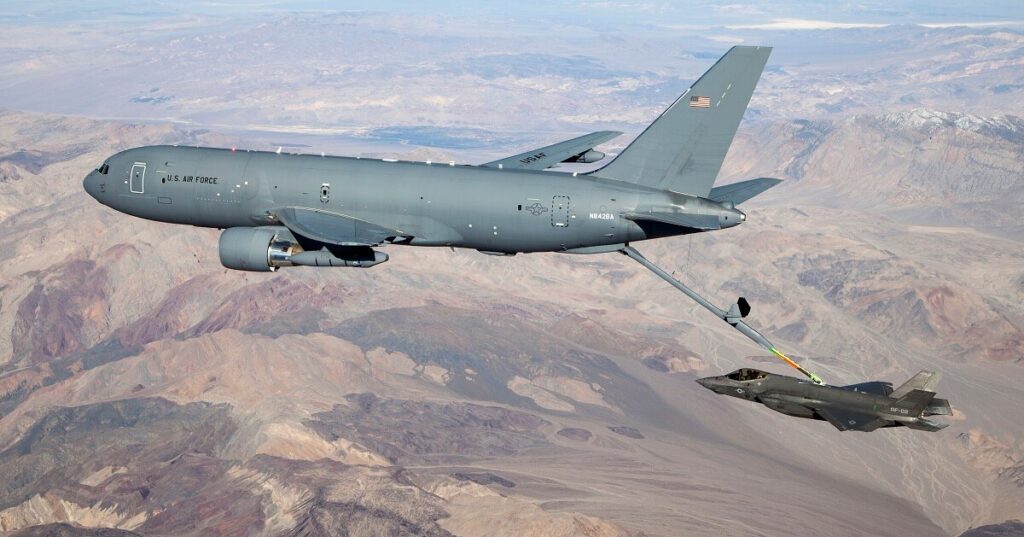
A KC-46 refuels an F-35
WASHINGTON: The Air Force i discussing a variety of options for a follow-on to the KC-46 tanker, including the possibility of an “autonomous tanker,” says acquisition chief Will Roper.
“KC-46 is going to take us all the way up to the doorstep of semi-autonomous and autonomous tanking,” he told reporters today.
He explained that Boeing’s re-design of the plane’s long-troubled boom control cameras for guiding re-fueling operations provides the foundational element that would enable fully autonomous aircraft.
As Breaking D readers know, the Air Force reached a deal in April to fix the Remote Vision System, or RVS. Roper and other Air Force leaders are convinced that the KC-46 is well on its way to success following that agreement.
“I think we’ve turned a new page and we’re excited about that,” Roper said. “When you build a properly designed RVS, you’ve done everything needed to do autonomous tanking. The only thing you’re missing are the algorithms to actually do it. And the Air Force has committed to put in those autonomy algorithms.”
However, at this point, there are no requirements yet for a semi-autonomous or fully autonomous tanker, Roper said. So he is talking with new Air Mobility Command head Gen. Jacqueline Van Ovost about how to do it — a discussion that involves not just the possibility of an autonomous tanker, but a whole panoply of options for undertaking the critical re-fueling mission.
Roper reeled off a variety of possible options. One could be a mixed fleet architecture, in which a large, piloted tanker would stand-off at long range to avoid enemy attack, while small, low-cost drones would fly the final miles and actually do the re-fueling. A stealthy tanker could be another option; or simply arming future tankers — putting sensor and shooters on the wings — to make them more survivable. The service could even consider simply building bigger fighters that carry more fuel, he mused, to reduce the number of times the tanker has to jump into the fray. (The F-35 has long been criticized by some for its range.)
But the need for solutions to the current vulnerability of expensive tankers is a critical issue, Roper noted, as the Air Force pivots to ready for future warfare with peer competitors as required by the 2018 National Defense Strategy.
“One of those next strategic questions for the Air Force is going to be: can you defend a tanker against an onslaught of fighters who know that every tanker you kill is like killing a lot of fighters or bombers or drones that it supports?” Roper explained.
He added that while “the good news is I think that there are enough options from what I’ve seen in the trade space that it’s a solvable problem,” he does have some concerns that it’s often hard for the Pentagon to understand and embrace multifaceted solutions to problems instead of falling back to the ‘one platform’ mindset.
“And this sounds like a really good architecture question that you’d want to have an architecture solution for, not a designed, one-solution candidate in the form of a platform,” he said.
Boeing buys GKN factory, ending dispute over F-15, F/A-18 parts
Through the deal, Boeing’s litigation with supplier GKN Aerospace will be dropped, and the aerospace giant will take possession of a St. Louis-area factory it used to own.


























